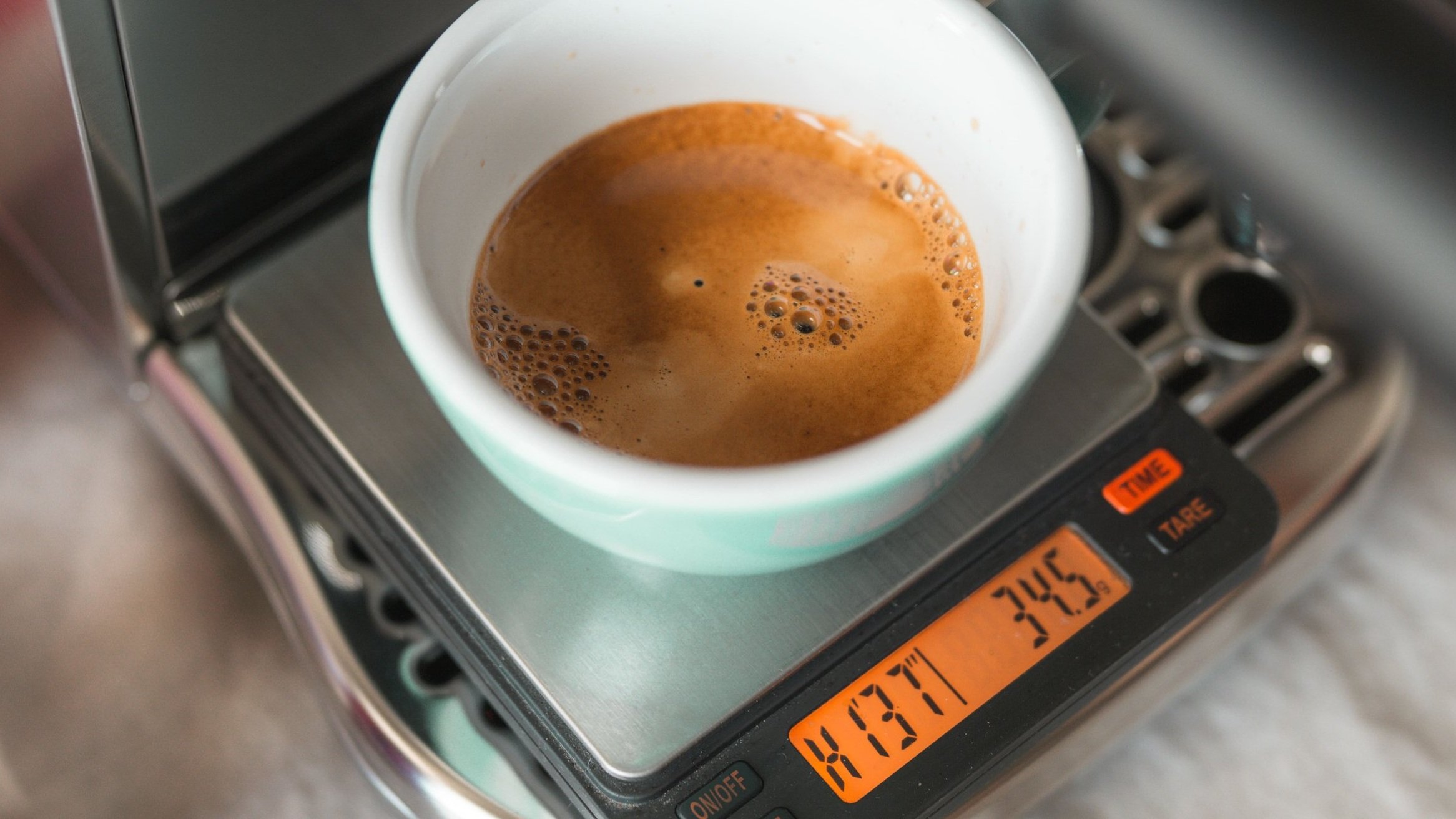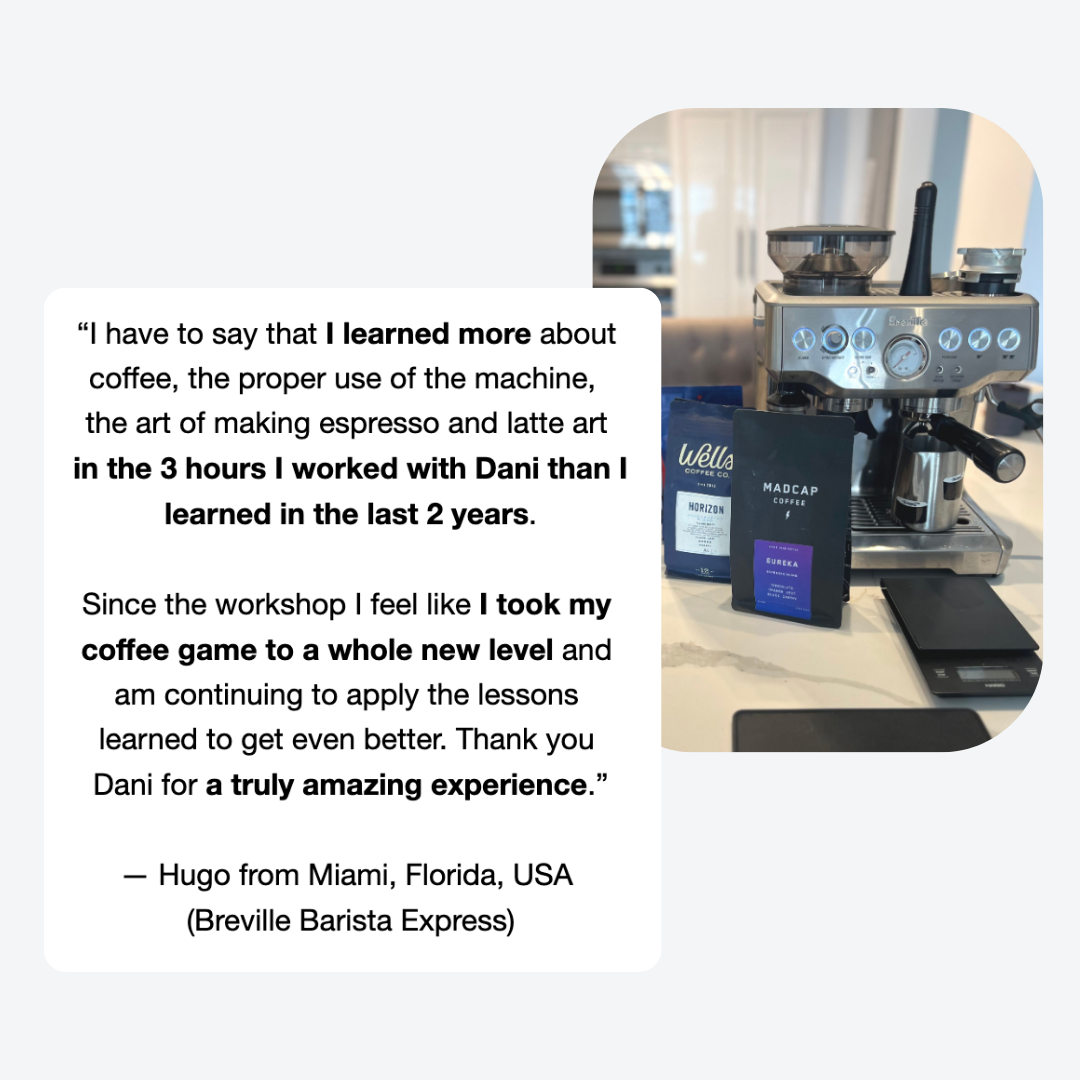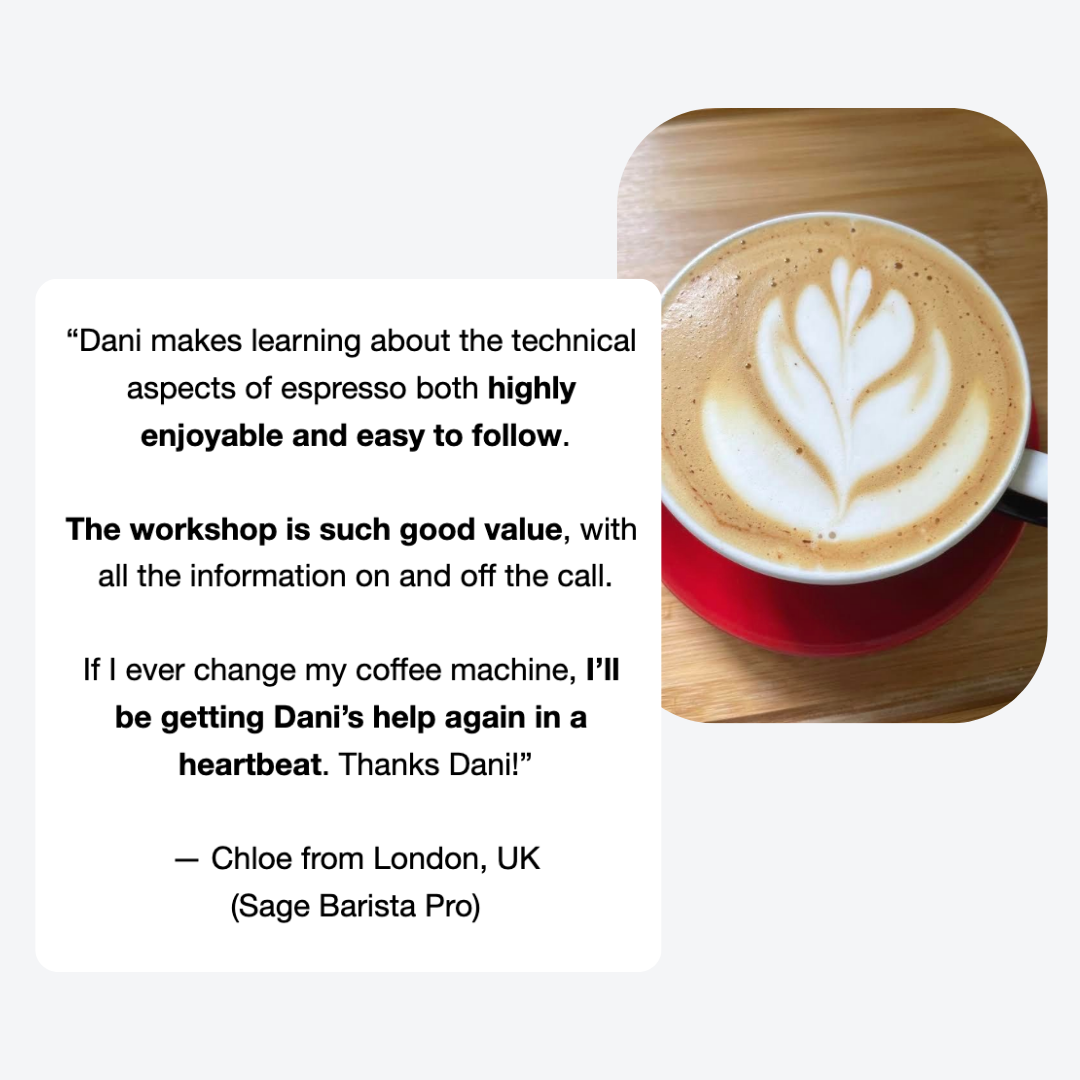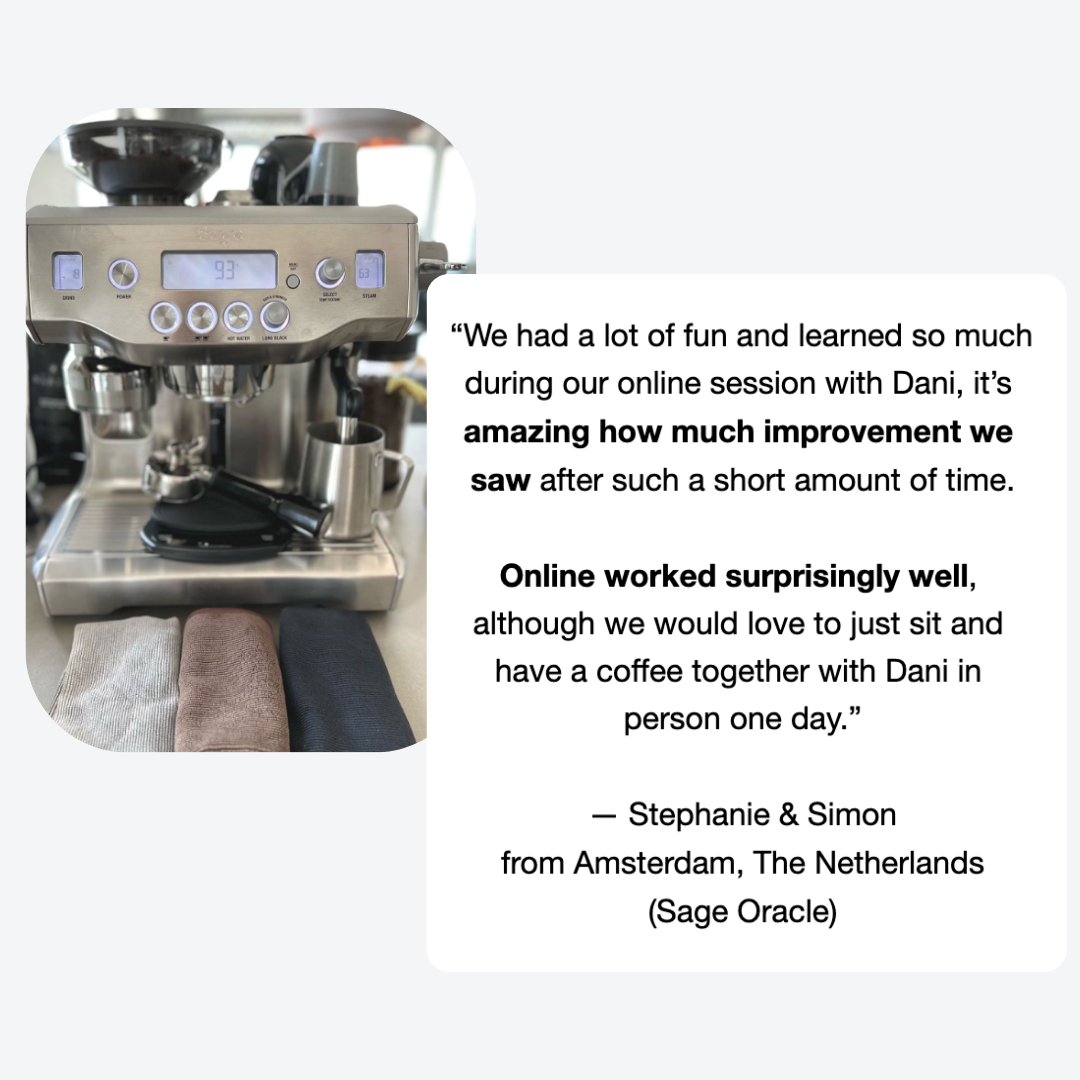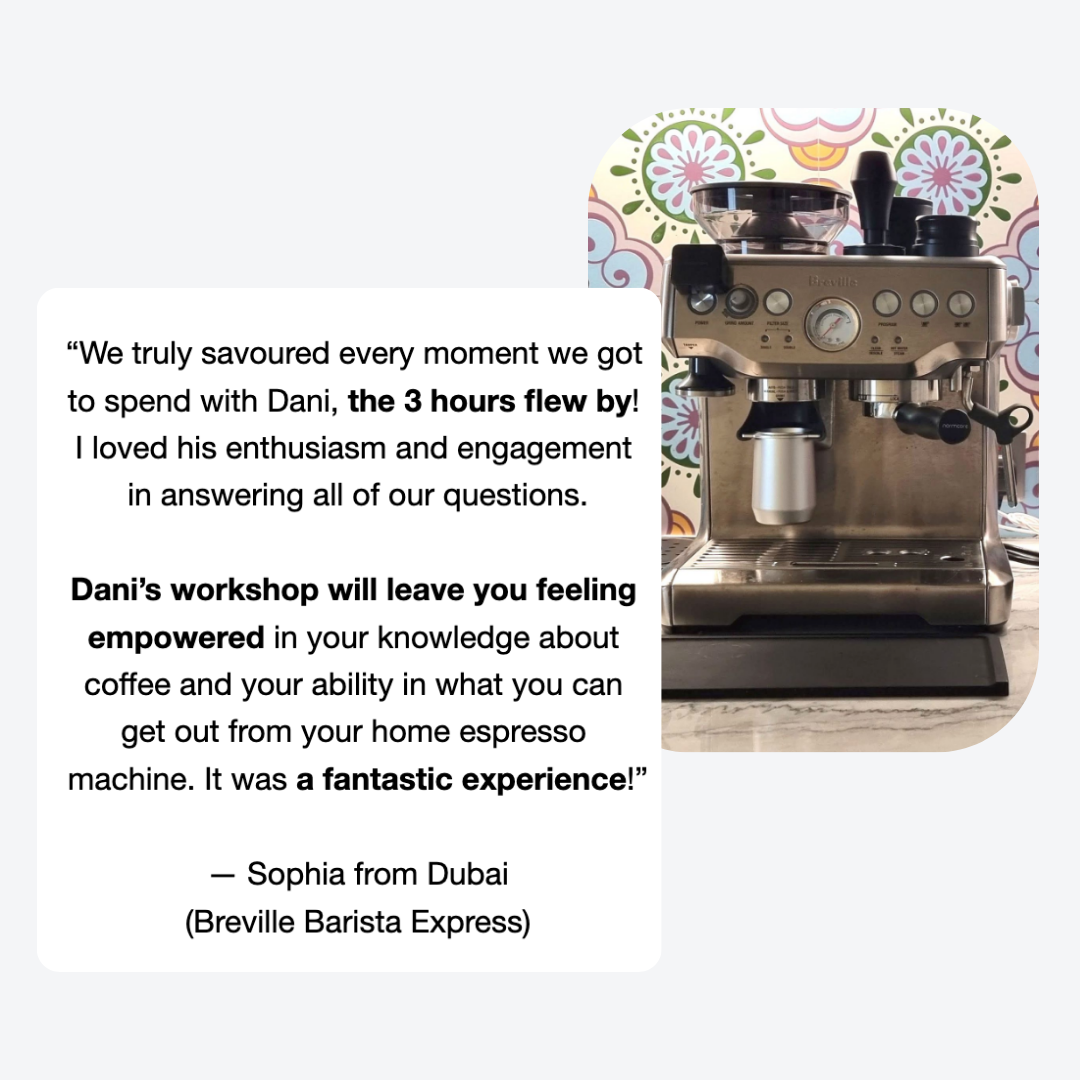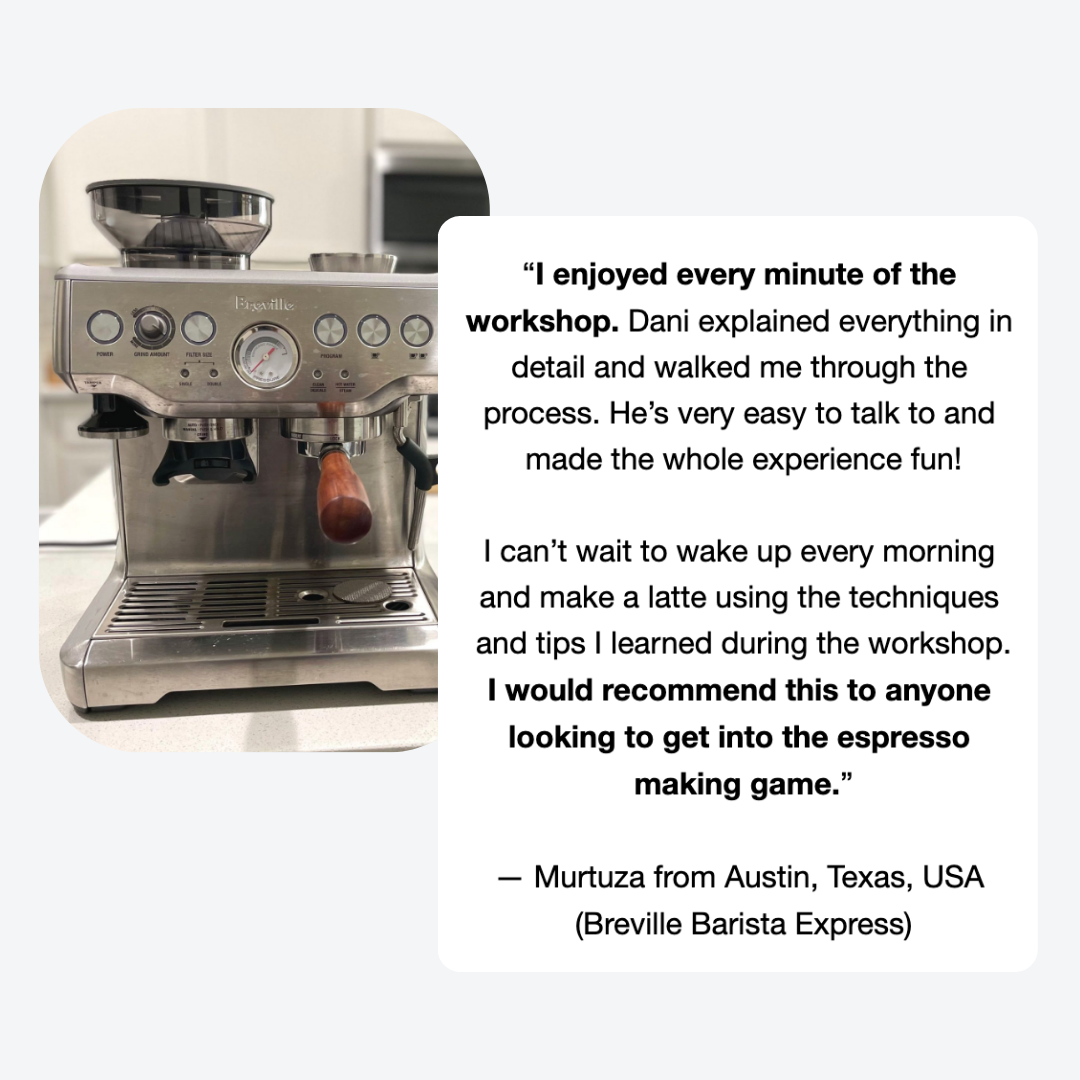How do I use a coffee scale when making espresso at home?
A step-by-step guide for beginner home baristas
If you’ve been around here for a while, you already know that I recommend you use a scale when making espresso at home, since there are a lot of benefits to doing so. For example, it helps you to be more accurate and increase consistency. Ultimately, you’ll get to enjoy the process more, as well as the taste of the espresso you’re making.
Many of you are beginner home baristas, which means you’re probably still getting used to working with various accessories, the coffee scale being one of them. Understandably, this can sometimes feel a bit overwhelming and confusing.
Since I truly believe a scale can make your home barista life easier and your coffee taste much better, I really don’t want anything to stay in the way of you incorporating one in your espresso making routine. This is why I decided to share a step-by-step guide to showcase how I’m using my coffee scale and get the most out of the Sage or Breville Barista Express.
Most common features of a coffee scale
On / Off button
Tare function (this resets the scale to zero and it will automatically subtract the weight of the dosing container or cup from your measurement)
Timer (ideally your scale has a built-in timing feature, which makes it easier to track the extraction time of your espresso)
Note: Many scales have an automatic shut off time (battery saving feature) and will turn off after 1 or 2 minutes of not being in use. To avoid it turning off right in the middle of your espresso workflow, I suggest you disable this feature, if possible.
How to use a coffee scale, step-by-step
In order to make use of all the features of the scale, we will pull an espresso shot in Manual Mode. There are two parts in the espresso making routine where we want to use the scale:
Part 1: Weighing the whole coffee beans
Part 2: Making the espresso
Part 1: Weighing the whole coffee beans
Turn on the scale.
Add a dosing cup or bowl on the scale.
Tare / reset the scale. The display should now read 0 grams.
Let’s add 17.5 grams of whole coffee beans. We can then throw the beans in the hopper.
Add the empty portafilter on the scale.
Tare / reset the scale. The display should now read 0 grams.
Grind the coffee into the portafilter.
Bring back the portafilter on the scale to ensure we have our desired dose.
We can distribute and tamp the ground coffee. We’re now ready to pull our first shot of espresso.
A couple notes:
Because I like to reduce waste and maintain the freshness of my coffee beans for longer, I don’t fill up the entire hopper with beans. Instead I single dose, meaning I weigh every dose in advance.
The built-in grinder of the Barista Express does have some retention (some bits of coffee remain stuck inside during the grinding process). This is why, in order to get our ideal dose, we add 0.5 grams more (as you can see above, 17.5 grams instead of 17 grams).
Part 2: Making the espresso
First, let’s lock in the portafilter. Then:
Place the scale on the drip tray, under the portafilter.
Add the cup you’ll be using for your espresso and tare / reset the scale. The display should now read 0 grams.
We will now pull the espresso shot in Manual Mode. Let’s press and hold the espresso button on the machine, to apply the desired pre-infusion time. At this point we can also start the timer on the scale (I recommend including pre-infusion in the total extraction time). Release the espresso button to continue with the extraction. Observe the espresso flow, as well as track the weight on the scale.
Once the scale records the ideal amount of espresso which you wish to have extracted, press again the espresso button on your machine to stop the extraction. This is when we also pause the timer on the scale and take note of the total espresso extraction time.
Note:
There will always be a few additional drips of espresso after stopping the extraction (especially when using the standard spouted portafilter), so I suggest stopping the extraction a little bit earlier. For example: if I’m aiming for 35 grams of espresso out, I’ll press the espresso button when the scale reads around 32 - 33 grams.
Now it’s time to taste your espresso, evaluate it (sweetness, acidity, texture, mouthfeel and aftertaste) and see if you can adjust anything to make it taste even better. If you need any help, we recently published a simple guide on how to make espresso at home with a new bag of coffee beans here.
I hope you find these tips helpful and, if you’d like to dive deeper, you may consider our espresso and latte art home barista workshops. Happy brewing!

